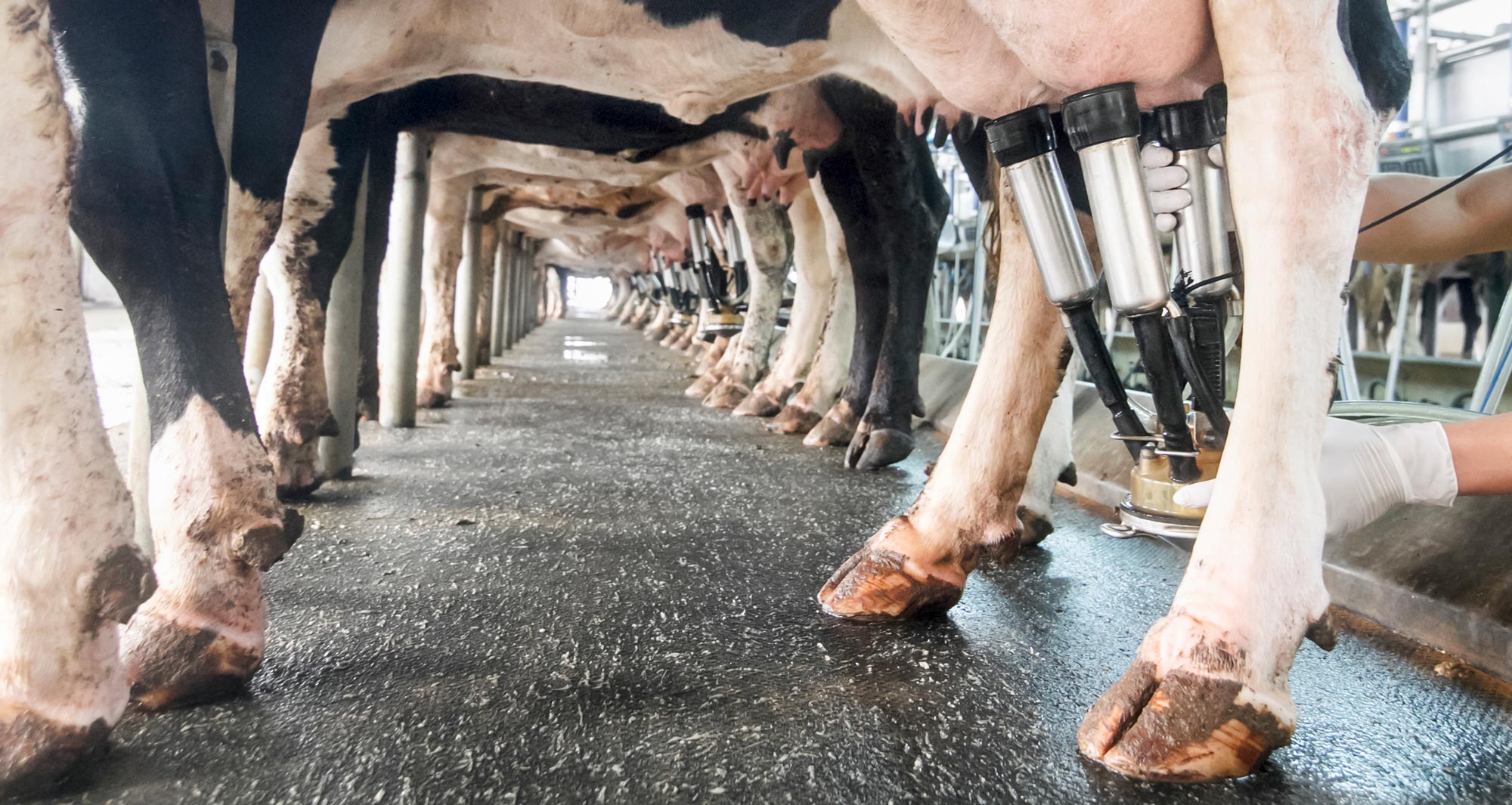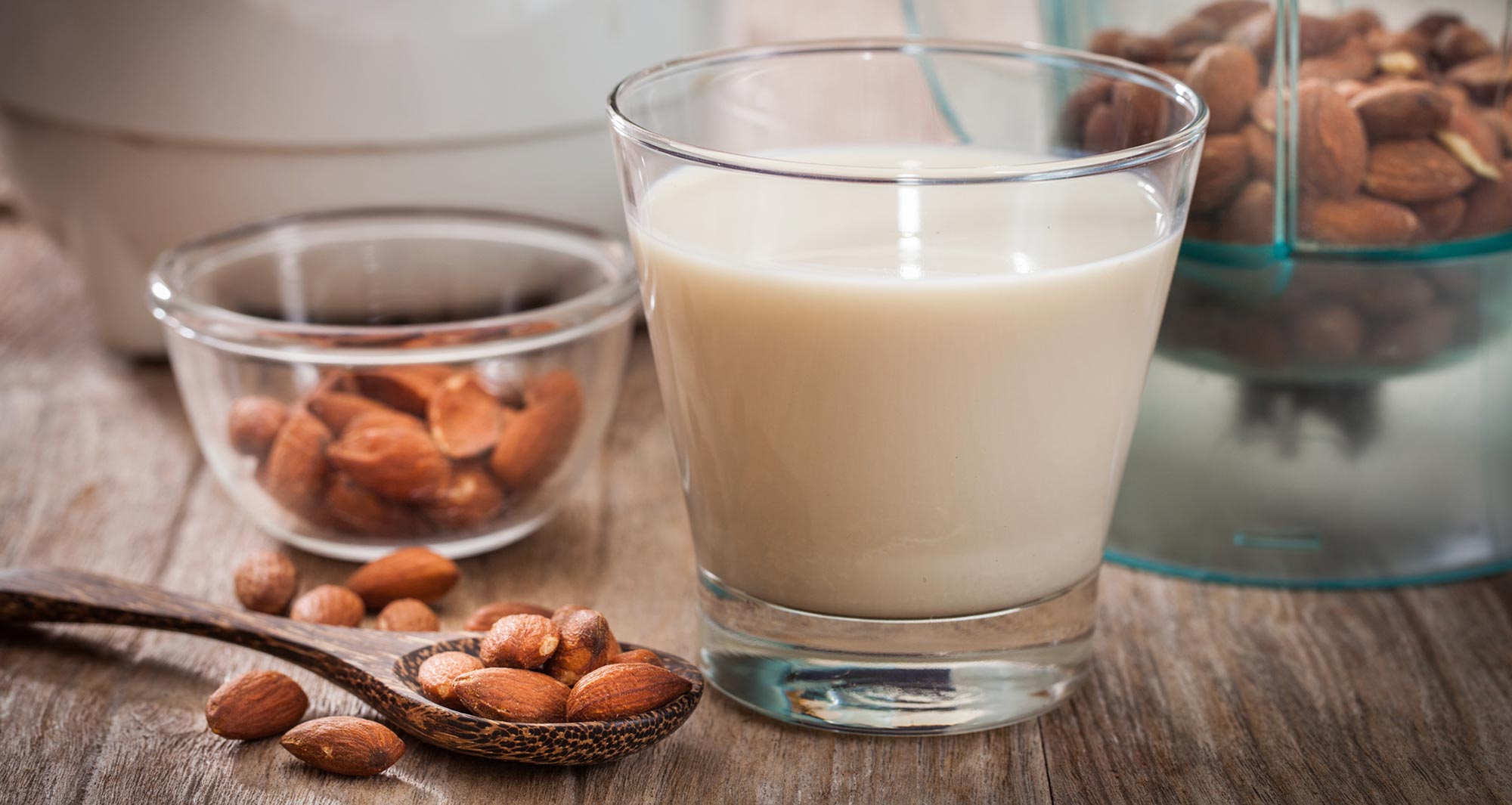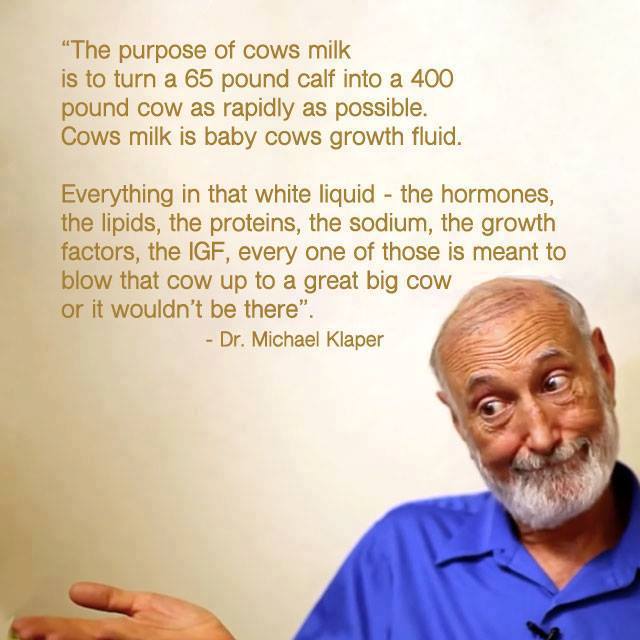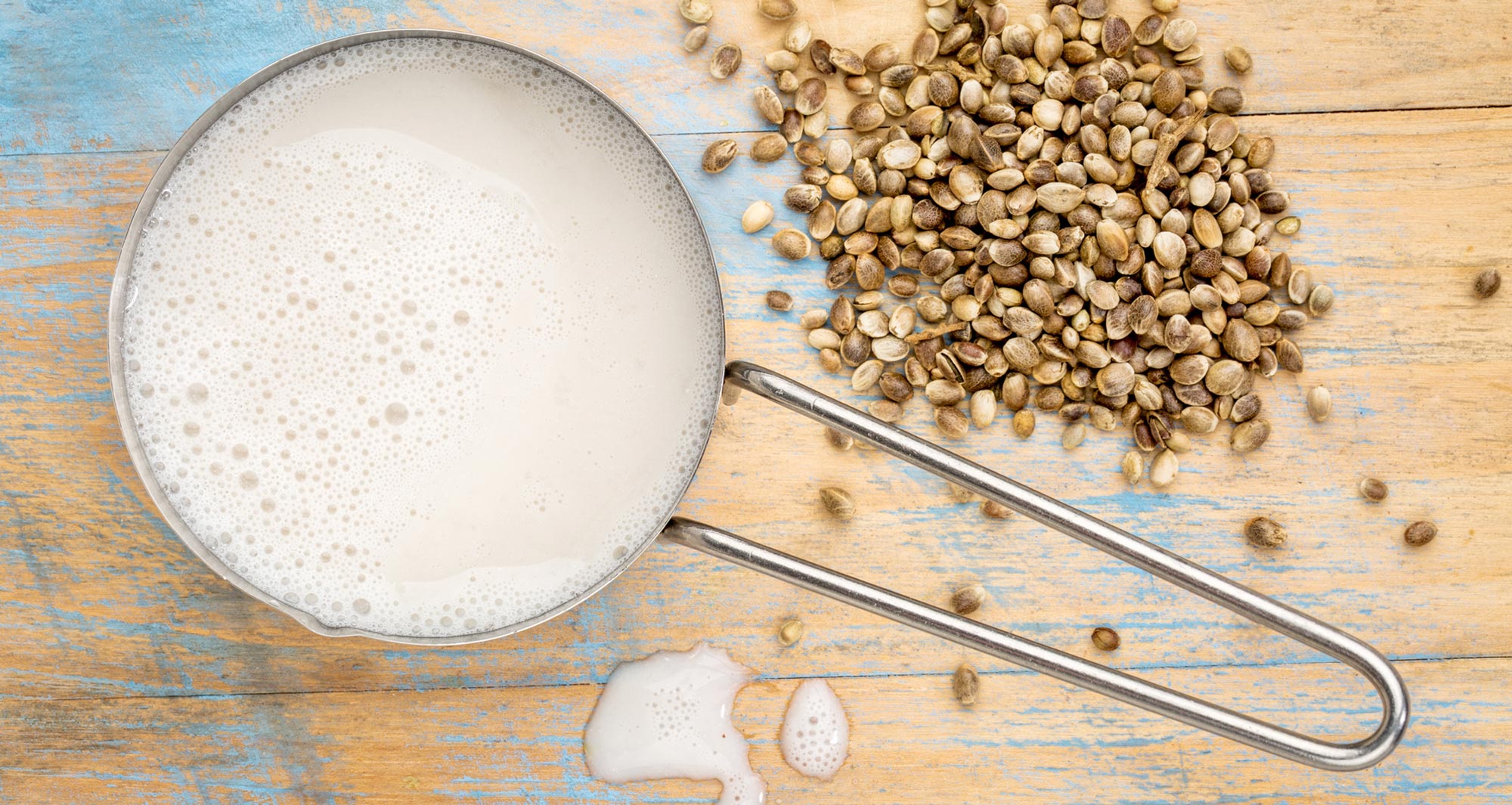Almonds are the new cow. So are cashews. Coconuts. Beans and peas. And pretty much any plant-based ingredients that can be turned into frothy, creamy, and delicious plant-based milk. No cow required.
Consumers are flocking to nondairy milk like cows flock to hay. It’s looking an awful lot like the tide is turning to greener pastures (perhaps because they’re growing nitrogen-fixing peas).
Facing declining sales and waning consumer interest, the dairy industry recently launched “Februdairy” — a month-long campaign aimed at revitalizing dairy’s increasingly sour image.
This initiative is a response to the growing trend toward plant-based milks and campaigns encouraging plant-based eating, including the popular UK-based Veganuary campaign, which encourages people to try going vegan for January and the rest of the year. In 2018, more than 150,000 people signed up, compared to only several hundred people when it launched in 2014.
This massive rise in plant-powered eating is happening around the world. For example, from 2014 to 2017, there’s been a 600% increase in the number of people identifying as vegans in the U.S.
What Is The Februdairy Campaign?
At a recent dairy industry conference, industry consultant Dr. Jude Capper sounded the alarm, announcing that, “If consumers don’t buy our products — milk, cream, butter, cheese etc — we will not have a dairy industry in five to 10 years.”
To boost dairy’s image and sales, she championed the initiative known as “Februdairy.” Throughout February, farmers and industry leaders are encouraged to share positive messages on social media using the #Februdairy hashtag.
Let’s make #Februdairy happen this year. 28 days, 28 positive #dairy posts. From cute calves and #cheese on crumpets, to belligerent bulls and juicy #beef #burgers – who’s in? #SmxConf18 pic.twitter.com/lewu2pLUhS
— Dr Jude Capper (@Bovidiva) January 15, 2018
Issues with Februdairy
But before Februdairy began, the campaign was already beginning to backfire. Critics of the dairy industry were using the hashtag for different reasons. A search in January on Twitter and Instagram yielded few intended results for #Februdairy.
Instead, the campaign seemed more like a commercial for promoting the benefits of plant-based milk products. People were using the hashtag to highlight the dairy industry divisive practices, dairy’s questionable health benefits, and dairy’s impact on the environment.
“While the campaign intended to bolster confidence in and support of the dairy market (and counteract Veganuary), it has instead cast a spotlight on the industry that it would have much rather avoided,” LiveKindly reported.
Consumers, health experts, and animal rights advocate all used the campaign to tell the (real) truth about dairy. For example:
This tweet:
It is absurd to suggest that human evolution has been so inefficient that we can only survive by drinking another mammal’s milk. Homo-sapiens evolved 200k years ago, we started drinking milk 7.5k years ago. We have consumed milk for less than 4% of human history. #Februdairy
— Katie (@mermaid_k8) January 24, 2018
And this Instagram post:
Editor’s note added in February: Midway through February, the hashtag still seemed to be largely used by people talking about the problems with dairy and the dairy industry, rather than messages from farmers and supporters of dairy milk.
The Problems With The Dairy Industry — Cruelty to Cows
The Februdairy campaign’s goal is to continue painting an idealized (and inaccurate) picture of modern dairy farming pushed by the industrial agriculture industry. The campaign intends to feature photos of “happy” cows and other bucolic farm imagery.
But the truth is vastly different. In reality, tens of thousands of animals are living inside giant steel sheds with little or no access to the outdoors.
Once a staple in most homes, the reality today is that cow’s milk comes with a whole host of problems. Cows are, of course, as adorable and lovable as ever. But with the hundreds of millions of them on the planet… well, things get a little complicated.
While a small percentage of modern farms produce milk from cows who are left outside to graze on fresh grass and clover, and perhaps to ponder the logistics and benefits of jumping over the moon, the majority aren’t afforded such luxuries.
In the vast majority of dairy operations in the U.S., the truth is, cows do not have happy lives. They spend their time indoors, typically on hard, abrasive concrete floors and frequently connected to a milking apparatus. Most never see a blade of grass.

They are artificially impregnated to ensure they continue to produce the maximal quantity of milk. Plus, they are fed antibiotics. And their feed is often contaminated with herbicide and pesticide residues from the genetically modified beans and grains they eat. Some are injected with genetically engineered growth hormones.
Recently, the dairy industry has been called out for its cruel treatment of these gentle animals. Even the #metoo campaign has been used to expose the cruel treatment of dairy cows.
A dairy cow will spend much of her life hooked up to milking machines that limit movement and can cause painful infections in her udder. Her babies are taken away just days after being born so that the milk can be bottled and sold.
Other Problems With The Dairy Industry
The dairy industry is also directly tethered to the notoriously cruel veal industry. Female calves become dairy producers, and male calves are often sent into confinement to be raised for veal meat.
And then there’s dairy’s impact on the planet.
Livestock is responsible for a significant amount of greenhouse gases. The United Nations puts the industry 14.5% of all GHG emissions — slightly more than transportation, which produces about 14% of total GHGs worldwide.
In California, the largest dairy-producing state, water usage for livestock is also of concern. One-quarter of California’s water budget goes toward producing beef and dairy. This is more water than all the businesses and homes in the state.
But the dairy industry does its best to keep all this from consumers. Clever marketing (“Got Milk?”), the prevalence of red barn imagery and toothy cow smiles on dairy labels, and other tactics have long convinced consumers this stuff is healthy and even necessary.
But with U.S. milk consumption down considerably, the dairy industry’s days as a dominant food industry force may be numbered. In fact, numbers from the USDA show that Americans are drinking almost 40% less dairy milk than they did in the 1970s.
The Demand for Plant-Based Milk Is Booming

As it turns out, people want more options than just whole, 2%, or skim milk. They want new flavors — and not just chocolate. They want milk varieties that are reinvigorating their taste buds. And they want plants.
Non-dairy milk is the leading driver of the plant-based foods category, growing more than 60% in the last five years to more than $2 billion in sales in 2017.
Sales of dairy are expected to drop by another 11% between 2015 and 2020, as a steady decline continues. On the other hand, nondairy milk sales are expected to continue seeing record-breaking and milk-shaking increases.
Dean Foods, a leading dairy producer, experienced a 91% decline in its net income from 2016 to 2017.
Elmhurst Dairy was once a thriving dairy producer, but declining interest and lackluster sales led the company to reinvent itself. Now known as just Elmhurst, the company has dropped cow’s milk for a booming plant-based milk business.
The company is a leading producer of non-dairy nut-milk products, including milk made from almonds, cashews, walnuts, hazelnuts, and peanuts.
There, they started “milking” almonds. Check out our story from @NPR on the history of Elmhurst Milked in “A Century-Old Dairy Ditches Cows For High-Tech Plant Milk” https://t.co/GpaPtvgILL
— Elmhurst 1925 (@Elmhurst1925) January 31, 2018
Why Dairy Might Not Be The Best Choice for Your Health
The dairy industry has spent millions of dollars touting milk as “nature’s most perfect food.” And it is. For baby calves. But what about for humans?
We are the only species on earth that drinks milk after infancy. And in all the years that humans have been around, we’ve only been drinking the milk of cows for the last few thousand — a minimal portion of our time on this planet.
Dairy milk does have all the nutrition calves need to grow. As a result, it’s full of many important nutrients, and it provides an abundant source of calcium, vitamin D, riboflavin (B2), vitamin B12, potassium, and phosphorus. But since modern milk almost always comes from recently pregnant cows, it also contains hormones that don’t do a human body any “good” at all.
These hormones are thought to be one of the reasons that dairy consumption has been found to be linked to increased rates of acne, and to increased risk of certain cancers — especially prostate cancer.
Many studies have explored the link between dairy products and heart disease. Perhaps the largest of them, conducted by Harvard Chan School researchers and published in the American Journal of Clinical Nutrition in 2016, reported on research done with 43,000 men and 187,000 women.
When calories from full-fat dairy products were replaced with carbohydrates from whole grains, the risk of heart disease dropped by 28%. Replacing dairy products with red meat, on the other hand, led to a 6% increase in heart disease risk.
Does Dairy=Strong Bones?
So what about the belief that milk is necessary for strong bones and the prevention of osteoporosis? Not true.
Clinical research shows that dairy milk has little or no benefit for our bones. For example, the Harvard Nurses’ Health Study, which followed more than 72,000 women for 18 years, showed no protective effect of increased milk consumption on fracture risk.
Most People In The World Can’t Digest Dairy
Another major problem with dairy consumption is lactose intolerance. As infants, our bodies produce a digestive enzyme called lactase, which breaks down lactose from mother’s milk. But as we grow up, many of us lose the ability to do that.
By adulthood, about three-quarters of the world’s population is unable to break down lactose, and there’s a strong racial dimension to lactose intolerance. The only ethnic group on the planet that can usually digest lactose is Caucasians. Most people of African, Asian, Arab, and Indigenous ancestry cannot.
As Caucasian-centric movies, corporations, and even government policies have promoted dairy product consumption around the world, they’ve unintentionally subjected billions of people to significant digestive problems. Lactose intolerance can cause nausea, vomiting, and diarrhea.
More Doctors Are Talking About The Problems with Dairy
Increasing numbers of doctors and researchers are now recommending against dairy consumption. Author and nutritional authority Michael Klaper, MD, said to FRN:
“If there was one substance I could eliminate from the American diet immediately, it would be those substances made from the secretions from the udder of a cow: dairy products.”

Plus, according to 10-time New York Times bestselling author Dr. Mark Hyman, dairy consumption is strongly linked to digestive issues and may even be connected to an increased risk of some types of cancer — including prostate cancer and breast cancer.
“Our bodies just weren’t made to digest milk on a regular basis,” Dr. Hyman explains. “Instead, most scientists agree that it’s better for us to get calcium, potassium, protein, and fats from other food sources, like whole plant foods — vegetables, fruits, beans, whole grains, nuts, seeds, and seaweed.”
Neal Barnard, MD, of the Physicians Committee for Responsible Medicine, wrote:
“Dairy products are packed with fat and cholesterol and may increase the risk of health problems ranging from asthma to some types of cancer. An elevated risk of prostate cancer incidence and mortality has been associated with dairy consumption and the same may be true for ovarian cancer.”
So overall, it seems that for many people, moving away from dairy milk may be a positive step.
Plant-Based Milk Offers Health Benefits — Without The Cruelty

“In striking contrast with cow’s milk, soymilk actually reduces the body’s [bad] cholesterol levels,” reports Scientific American.
“It also contains isoflavones, natural plant hormones that act as antioxidants and have been linked to many human health benefits including the easing of menopause symptoms, protection against prostate problems, better bone health and even a reduction in heart disease and cancer risks.” (If you’re concerned about the health impacts of soy, check out this report from John Robbins.) And, as with all soy products, be sure to choose organic if you can because most are genetically modified.
In recent years, soymilk, while still a popular choice, has taken a backseat to other plant-based milk choices, primarily almond and coconut milk. Consumers are going nuts for other plant-based milks: cashew, pea, macadamia, oat, even flax seed milk.
These plant milks boast numerous health benefits similar to soy. Particularly, they have cholesterol-lowering benefits, more absorbable sources of calcium, as well as protein, healthy fats, and antioxidants. (Get a plant-based doctor’s thoughts on the healthiest plant-based milk here.)
Will Dairy Continue to Decline?
Dairy has been widely recommended for good health. And many people still think consuming dairy milk is necessary to get enough calcium.
But as the backlash to the Februdairy campaign shows, more people are becoming aware of problems with dairy and the dairy industry. Overall, the tide is shifting toward plant-based foods, and the dairy industry may never be the same. Which just might be a good thing for cows, humans, and the planet.

Let us know in the comments: What do you think?
Featured Image: iStock.com/stefbennett

